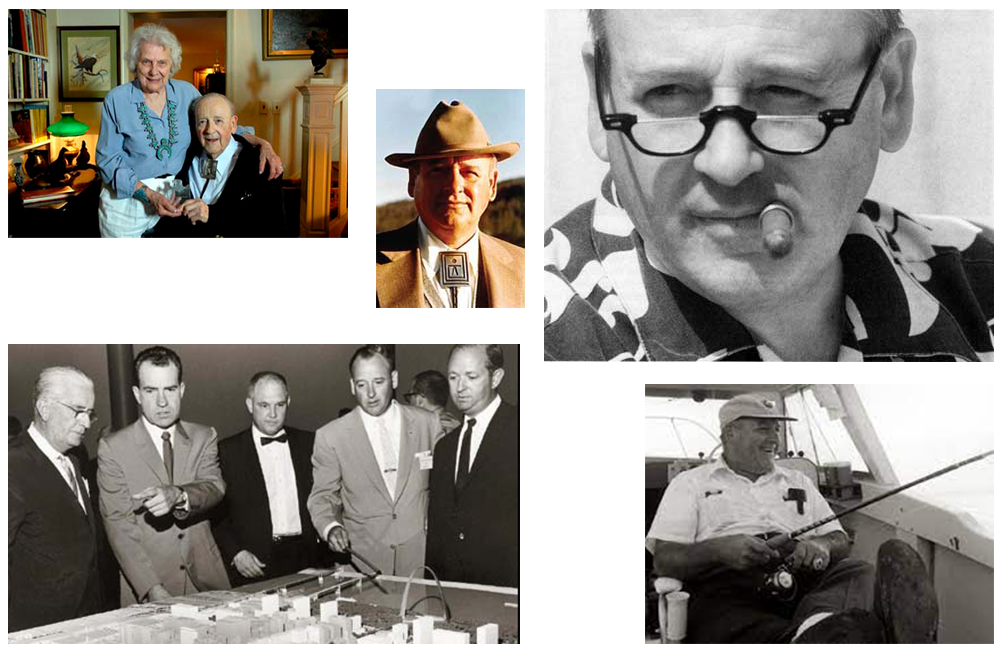George B. Hartzog, Jr. Awards & Lecture Series

The Hartzog Fund was conceived in 1978 when William C. Everhart and his wife, Mary, sought to honor the man who had meant so much to them and to the park movement in the United States. Everhart, after serving as Alumni Visiting Professor at Clemson in 1978, chose to honor Hartzog by presenting a financial gift to the Department of Parks, Recreation and Tourism Management in Hartzog's name. The Everharts' gift, along with donations from foundations, associates and friends, sponsors two annual activities and one graduate student scholarship.
The George B. Hartzog, Jr. Lecture Series in Park and Conservation Area Management was developed to feature leading figures in the field of conservation. In addition to the Hartzog Lecture Series, the fund also supports the annual Hartzog Awards program, where up to six awards are presented to recognize exemplary leadership in addressing environmental issues and concerns.
The Hartzog Fellowship was implemented in 2003 and supports a graduate student doing research in parks associated with the National Park Service.
Please help us expand these programs and promote excellence in resource management and conservation by making your donation to the Clemson University Foundation - Hartzog Fund or mail to:
Clemson University Foundation
PO Box 1889
Clemson, SC 29633-1889
George B. Hartzog, Jr. ~ 1920 - 2008
Often called "America's Greatest Idea," our national park system is the envy of others. It is also unique to us, and has been copied over the world. Unfortunately, we often take this superb collection of natural and cultural icons for granted. Yosemite, Yellowstone, Grand Canyon, and Great Smoky Mountains are easily recognizable names to many if not most Americans. Muir, Mather, Albright, Hartzog are not so associative. Generally, the parks are known, but not the people behind them.
Indeed, our system of national park areas is for the people, but they are also established and perpetuated as a result of the efforts and ingenuity of a select group of individuals. Some of these have given birth to the system, and others have nurtured it. Either way, these individuals are as significant to the cultural well-being of this country as any of those persons more recognizable in our history texts. Their signatures, however appear as the scenic splendor of Yellowstone, or the hallowed grounds of Gettysburg, rather than as print in a book.
George B. Hartzog, Jr. was one such "man behind the scenery." As the seventh Director of the National Park Service from 1964 to 1972, his administration led the largest expansion of the national park system in its history, adding 69 units. Among the many historic accomplishments during the "Hartzog Years" are the key highlights which follow:
- Initiated the Bible Amendment of the Alaska Native Claims Settlement Act of 1971 reserving selection of 80 million acres of National Interest Land from State and Native Interest lands for possible addition to the national park, forest, wildlife refuge and wild and scenic rivers systems. From these and other lands, Congress in 1980 more than doubled the size of the national park system, adding more than 43 million acres.
- Supported, in concert with the Director of the Bureau of Outdoor Recreation and the Chief of the US Forest Service the development and passage of: The Wilderness Act; The Land and Water Conservation Fund Act; the Wild and Scenic Rivers Act; and the National Trails System Act.
- Developed recruitment, training and promotion initiatives to involve women, minorities and Native Americans in national park management programs.
- Created the proposal and obtained Congressional authorization for the Volunteers in Parks (VIP) program. In 1997, there were approximately 90,000 VIPs throughout the system, outnumbering full-time employees four to one. Many park visitor services could not be provided without these individuals.
- Initiated the "Bring Parks to People" urban park programs in San Francisco and New York; "Summer in the Parks" and "Parks for All Seasons" youth programs in partnership with public schools, local governments and citizen organizations; "Living History" programs to link generation to generation; and "Environmental Education Landmarks" with environmental education curricula to foster a sense of community in our society.
Director Hartzog is listed in Who's Who in America, Who's Who in the World, and profiled in Exemplary Public Administrators, Character and Leadership in Government. At the Jefferson National Expansion Memorial in St. Louis, Missouri, the George B. Hartzog, Jr. Visitor Center is featured. The architectural masterpiece of the Arch may well be his perpetual landmark of achievement.
Since leaving government service, he continued to provide his unique style of leadership as a Director of the White House Historical Association (1973-1998) and President and Chairman of its Executive Committee (1995-1998), Chairman of the Trustees of the White House Endowment Trust (1998-2004), and with the Wolf Trap Associates (Chairman), National Trust for Historic Preservation, the Marjorie Merriweather Post Foundation and numerous other cultural and environmental groups.
All this may be best summarized by the words of the Secretary of the Interior's Advisory Board on the National Park System who stated, "There will never come an end to the good he has done."
George B. Hartzog and his wife, Helen, have been long-time supporters of the PRTM Department.
